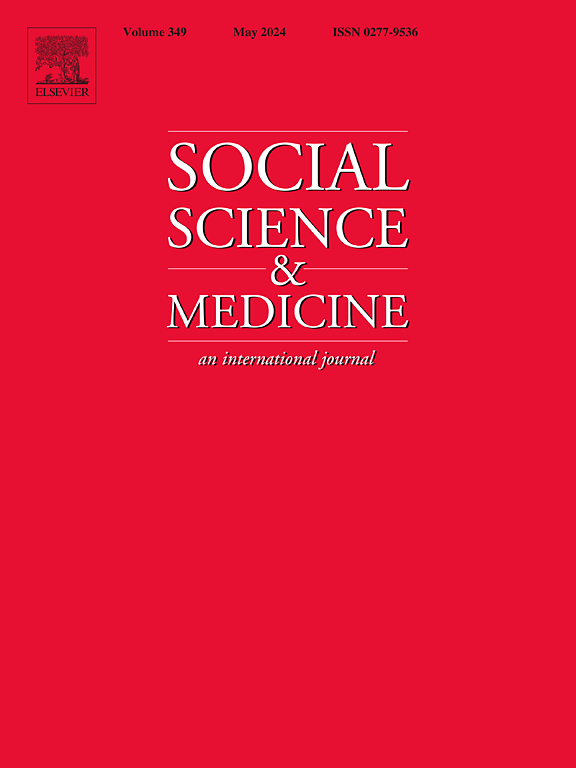Explaining subjective social status and health: Beyond education, occupation and income
IF 4.9
2区 医学
Q1 PUBLIC, ENVIRONMENTAL & OCCUPATIONAL HEALTH
引用次数: 0
Abstract
Subjective measures of social status often explain variations in health better than the typical objective measures of education, occupation, and income. This raises the question: if status affects health, then what affects status? To answer this, we ran a survey using representative samples of adult populations in the UK, US and Canada (n = 3,431) to gather data on respondents' subjective social status (SSS) and health-related quality of life (HRQoL), alongside an extensive, rarely gathered set of socioeconomic variables: education, occupation, income, comparative income, wealth, childhood circumstances, parents' education, partner's education, and social and cultural capital. We conduct Shapley-Owen decompositions to identify the relative contributions of these variables in explaining variation in SSS and HRQoL and use RIF (recentered influence function) -regressions to go beyond the mean and identify how these contributions change across the quantiles of SSS and HRQoL. Results show that education, occupation, and income explain relatively little of the explained variation in SSS (26%), while comparative income, wealth and childhood circumstances together explain more than 60%. We find that at higher quantiles of SSS and HRQoL the more subjective and relativistic measures of socioeconomic status contribute more to the explained variation, whilst at lower quantiles, variation is better explained by the more objective socioeconomic variables (i.e. education, occupation, income and wealth). These findings shed light on how policy makers could consider intervening to reduce health inequalities.
求助全文
约1分钟内获得全文
求助全文
来源期刊

Social Science & Medicine
PUBLIC, ENVIRONMENTAL & OCCUPATIONAL HEALTH-
CiteScore
9.10
自引率
5.60%
发文量
762
审稿时长
38 days
期刊介绍:
Social Science & Medicine provides an international and interdisciplinary forum for the dissemination of social science research on health. We publish original research articles (both empirical and theoretical), reviews, position papers and commentaries on health issues, to inform current research, policy and practice in all areas of common interest to social scientists, health practitioners, and policy makers. The journal publishes material relevant to any aspect of health from a wide range of social science disciplines (anthropology, economics, epidemiology, geography, policy, psychology, and sociology), and material relevant to the social sciences from any of the professions concerned with physical and mental health, health care, clinical practice, and health policy and organization. We encourage material which is of general interest to an international readership.
 求助内容:
求助内容: 应助结果提醒方式:
应助结果提醒方式:


